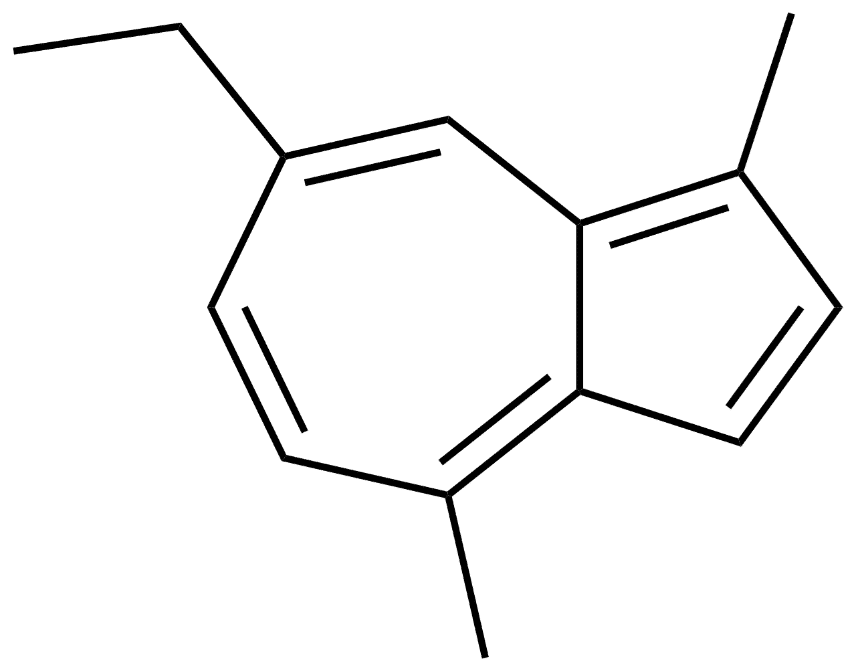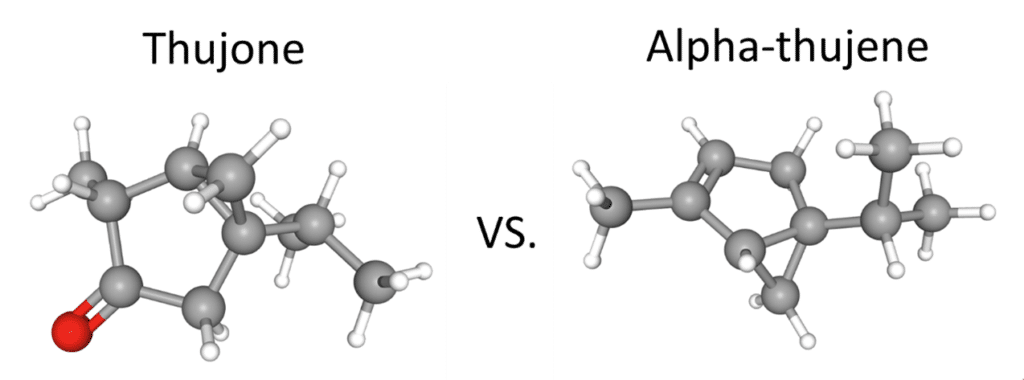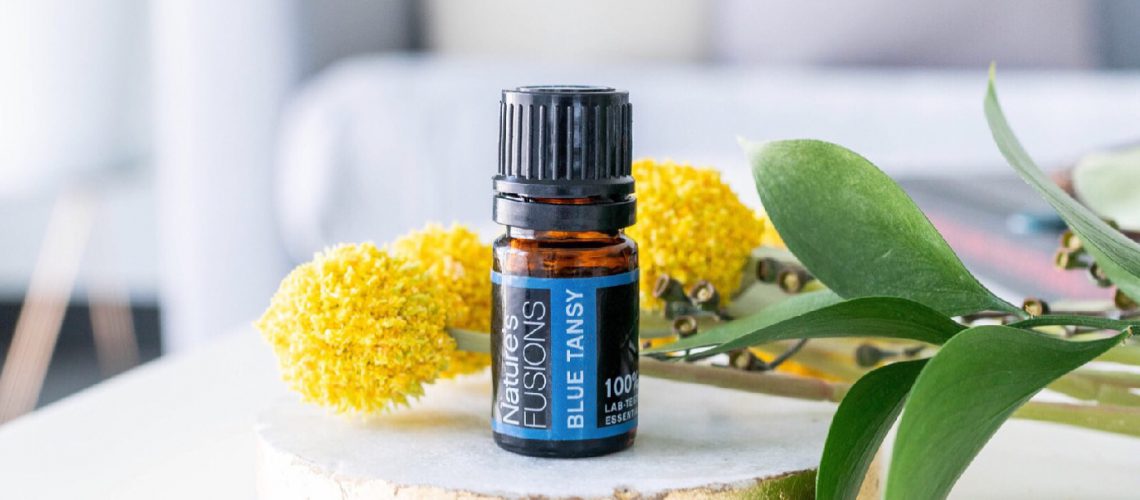Despite its misleading name, this gorgeous Moroccan flower has bright yellow blossoms with a sweet smell. Both blue tansy flowers and blue tansy oil have a scrumptious scent, floral with a hint of rosemary. Blue tansy was considered a necessity for any respectable garden in renaissance England, and the plant continues to be a favorite of herbalists and perfumers today.
Charming Chamazulene
Nature’s Fusions Blue Tansy essential oil has over 47 different naturally occurring chemicals in it. Its most plentiful chemical, and the cause of its colorful name, is Chamazulene (fig. 1). Chama is inspired by the plant chamomile (Matricaria chamomilla), which is known for its soothing properties and is popular in tea and facial washes.
For our Spanish speakers out there, you’ll probably recognize that cham-azul–ene has a familiar word—blue! Chamazulene is blue in color, which is what gives blue tansy oil its deep blue tint. Chamazulene is also found in other plants associated with herbal home remedies, including wormwood (Artemisia absinthium), and yarrow (Achillea millefolium).

Figure 1: Chamazulene is an aromatic organic compound. Each individual molecule is made up of 14 carbon and 16 hydrogen atoms. This diagram shows the arrangement of the carbon atoms in each molecule, just imagine a carbon wherever two lines meet or a line ends!
Although chamazulene has a pleasant scent, its aromatic classification actually comes from its shape, not its scent. In chemistry, a molecule is considered aromatic if it has a ring-shaped structure with strong chemical bonds called pi bonds. This diagram represents pi bonds with extra lines inside the shapes, which shows the carbons in those rings are bonded especially well, as they share more that one electron between themselves.
We’re Through with Thujones
Our 3rd party test results show that our blue tansy oil contains no detectable amount of thujones. Note that 0.21% of the oil mixture is made up of alpha-Thujene, however alpha-thujene has a distinctly different chemical structure than thujones and does not create the same kind of irritation (Fig. 2). We want our scent-seekers to enjoy the fullness of blue tansy’s scent and soothing properties without worrying about chemical irritation.

Figure 2. Thujones molecules are made up of carbon (grey), hydrogen (white) and one oxygen atom (red). Alpha-thujenes, on the other hand, lack that oxygen, which causes them to behave differently and less reactively that thujone molecules.
Conclusion
If you’re curious about blue tansy’s soothing, sweet scent, we recommend that you pick up a bottle of our Blue Tansy essential oil. It’s a staple, perhaps even a necessity, for any essential oils collection.

